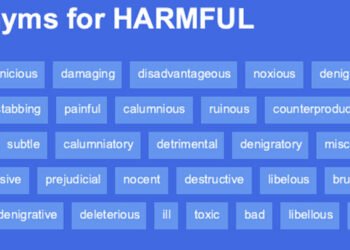Flashcards can help children learn math, but they are not the only tools to teach math. In fact, relying solely on flashcards can limit a child’s understanding of math concepts and hinder their overall progress.
Fortunately, there are many other effective strategies for helping your child with maths at home that can complement the use of flashcards. But before looking at them, consider these advantages of moving beyond flashcards when teaching children math.
Why you should upgrade from just using flashcards
Increased understanding
While flashcards can help children memorize math facts, they may not help children understand how those facts relate to each other or how to apply them to real-life situations. By using other teaching tools, such as manipulatives, games, and strategies for helping with math, children can gain a deeper understanding of math concepts and learn how to use those concepts in several contexts.
Improved problem-solving skills
Math is not just about memorizing facts; it’s about applying those facts to solve problems. Using various teaching strategies, children can learn how to approach different math problems and develop problem-solving skills that will serve them well throughout their academic and professional lives. Besides, practicing with alternative approaches to learning will stop them from being overly dependent on flashcards and make them more critical of information, ideas, and strategies.
Increased engagement
Children may quickly become bored or disengaged when they are asked to do the same thing over and over again. Knowing how to help your child with maths starts by finding a system that keeps them interested in the subject. Then, by using various teaching strategies, you can keep children engaged and motivated to learn.
Start incorporating games and other fun activities into math lessons. Consider connecting with experienced Maths and Physics tutors specializing in making learning fun and engaging. They can create personalized lesson plans and activities based on your child‘s interests and learning style.
Personalized learning
Every child learns differently, and what works for one child may not work for another. Using various teaching strategies, you can personalize your approach to each child’s learning style and needs. For example, some children learn best through playful activities, while others learn better through visual tools and strategies or verbal descriptions and pedagogy.
Moving beyond flashcards to teach math can help children develop a deeper understanding of math concepts, improve their problem-solving skills, stay engaged and motivated, and receive a more personalized learning experience. Once you decide to transition, consider these extra tools and strategies to help your child develop strong math skills and succeed academically and professionally.
Alternative tools for teaching kids math
Manipulatives
Manipulatives are physical objects that children can use to explore math concepts hands-on. For example, blocks can be vital in the lessons on addition and subtraction, while tutors can use pattern blocks to teach geometry and spatial reasoning. In addition, manipulatives help children visualize math concepts and better understand how numbers and shapes work together.
Games
Games can be surprisingly effective at teaching math concepts while keeping children engaged and motivated. For example, board games like Monopoly and Clue can teach children about money and logic, while digital games can help children practice math skills in a fun and interactive way. Besides, since students enjoy playing, they will have no issues with being at these activities for extended periods, thus improving their study times.
Visual aids
Visual aids like diagrams, graphs, and charts can help children visualize math concepts and understand how numbers and data relate. These tools are indispensable for kids with hearing loss or other similar challenges. Bobek and Tversky (2016) believe students enjoy learning with visual aids; using tools like a bar graph to compare the heights of different trees can help children understand the concept of measurement and data analysis.
Online resources
There are many online resources available that can help children practice and learn math skills. Brighterly is an excellent example of an online resource destination offering interactive math lessons and games for children of all ages.
Strategies to get the best out of this learning style change
Create a Positive Learning Environment
Creating a positive learning environment is one of the first ways parents can help with math. Encourage your child to ask questions and explore new concepts. Make math fun by incorporating games and puzzles into your daily routine. Set aside a designated study area that is free from distractions and noise.
Use as Many Valuable Resources as You Can Find
While a flashcard is a great memorization tool, also consider using online math games and apps. They are developed with repetitive actions that support memorization. Websites like Brighterly offer a variety of easy math games for kids that can help your child improve their math skills while having fun. Good Men Project provides a list of some of the best free 4th-grade online math games and apps in 2022 that can be helpful for your child.
You can also use textbooks, workbooks, and online resources to reinforce concepts that your child is learning in school. If your child struggles with a particular concept, consider hiring a tutor to provide one-on-one instruction and support.
Don’t Stop Practicing
Practice is crucial in developing strong math skills. Encourage your child to practice math concepts regularly, even if they don’t have homework assignments. Practice can be as simple as solving math problems together, playing math games, or even creating real-world math problems for your child to solve. The more your child practices, the more confident and comfortable they will become with math.
Make it Realistic
Look for opportunities to incorporate math into everyday activities and help your child see the real-world applications of math by connecting math concepts to everyday situations. This is one of the most potent ways to improve math skills in kids. By showing your child the practical uses of math, they will be more motivated to learn and apply math concepts daily.
Be Patient and Supportive
Learning math can be challenging, so it’s essential to be patient and supportive of your child as they develop their math skills. Don’t pressure your child to be perfect or get everything right the first time. Instead, focus on encouraging your child’s effort and progress. Celebrate small victories and milestones, and help your child overcome challenges and mistakes.
Assess Your Homeschool Math Curriculum
It’s essential to measure the success of your homeschool math curriculum to ensure that your child is progressing and developing a solid understanding of math concepts. You can use various methods to measure your child’s progress, such as timed tests, quizzes, and assignments. You can also use online resources and tools to track your child’s progress and identify areas where they may need additional help.
Encourage Curiosity
Encourage your child to ask questions and explore math concepts on their own. You can do this by providing them with puzzles and games that require mathematical thinking. Alternatively, find loopholes in movies, especially when it involves numbers or counting, and help them learn to spot them. You can also show them how to use math websites or apps that make learning math fun.
Get Involved in Their Education
Stay involved in your child’s math education by attending parent-teacher conferences, communicating with their teacher, and volunteering at their school. Your mere presence and interest will spur them to be more engaged in their studies. In addition, staying involved will make you understand your child’s strengths and weaknesses and provide them with additional support when needed.
In Summary
Flashcards are tried and tested tools for teaching math, but with improvements and changes in technology, curriculums, and teaching strategies, they are becoming inadequate as standalone tools. Instead, consider using the tools and strategies in this article when teaching your child math. They have many advantages and don’t require too much for you to implement or introduce to your kids.












